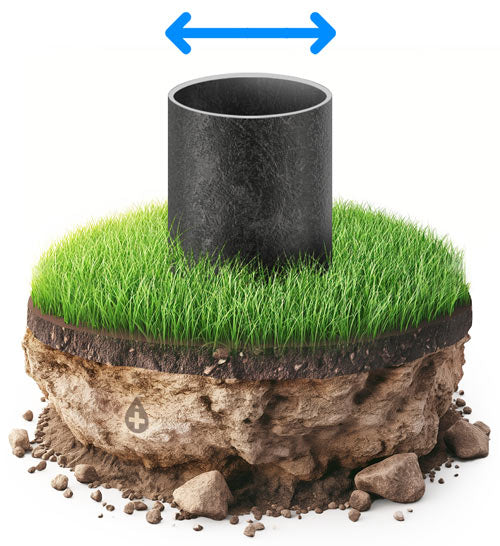Find Your Pump
Select Your Well Casing Diameter

Select Your Desired Pump Length
Select Your Desired Pump Length
Select Your Desired Pump Length
Select Your Desired Pump Length
Select Your Desired Pump Length
Select Your Desired Pump Length
How Will You Use Your Pump?
I plan to rapidly deploy my pump in response to an emergency or use it in multiple wells.
I will install my pump in a single well and intend to use it frequently.
Summary
Step 1: Selected Well Casing Diameter
Step 2: Selected Pump Length
Step 3:
Need Help ?
How do I measure my casing diameter?
To measure your well casing diameter, you'll need a few tools: a measuring tape or ruler, a wrench or pliers (if there's a cap), and a screwdriver (if screws are present).
Locate the Top of the Well Casing:
First, find the exposed top of your well casing. It's usually a metal or PVC pipe sticking out of the ground. If there's a cap, use a wrench or pliers to remove it. If the cap is secured with screws, use a screwdriver to remove them
Measure the Inside Diameter:
We prefer that you measure the inside diameter (ID) of the well casing for the most accurate sizing. To do this, place your measuring tape or ruler across the center of the inside opening of the well casing. Measure the distance from one inside edge to the other. This is your well casing’s inside diameter.
What if my well casing diameter measurement is not listed?
If your well casing diameter measurement doesn't match the sizes listed, here’s what you can do:
Double-Check Your Measurement:
Ensure that your measurements are accurate. Re-measure both the inside and outside diameters to confirm.
Contact Us for Assistance:
If your measurements still don't match our listed sizes, please reach out to us. Our expert team can guide you in selecting the right pump for your specific well casing size.
Should I measure the inside diameter or outside diameter?
You should measure the inside diameter of your well casing for the most accurate sizing. The inside diameter provides the precise measurement needed to ensure the pump fits correctly inside the well casing. Measuring the outside diameter is an alternative if you can't access the inside, but it is less precise and should only be used if absolutely necessary.
Need Help ?
How do I determine the pump length I need?
Measure Well Depth: Use a weighted tape to measure from the top of the well casing to the bottom.
Find Static Water Level: Measure from the top of the well casing to the water surface.
Calculate Pump Placement: Subtract the static water level from the total depth. Place the pump at least 20 feet below the static water level.
Select Pump Length: Choose a length that keeps the pump intake below the water level but off the bottom.
How do I find my well depth?
Use a Weighted Measuring Tape: Lower a weighted tape measure into the well until it touches the bottom. Mark the point where the tape meets the top of the well casing, then pull the tape out and measure the length from the weight to the mark. This is your well depth.
Use a String and Weight: You can also use a string with a weight, such as a metal nut, attached to the end. Lower it into the well until it reaches the bottom. Mark the string at the top of the well casing, then pull it out and measure the length from the weight to the mark.
How do I measure my static water level?
Use a Weighted Measuring Tape: Lower a weighted tape measure into the well until you feel it touch the water surface. Mark the point where the tape meets the top of the well casing. Pull the tape out and measure the length from the weight to the mark. This is your static water level.
Use a String and Weight: You can also use a string with a weight, such as a metal nut, attached to the end. Lower it into the well until it touches the water surface. Mark the string at the top of the well casing, then pull it out and measure the length from the weight to the mark.

